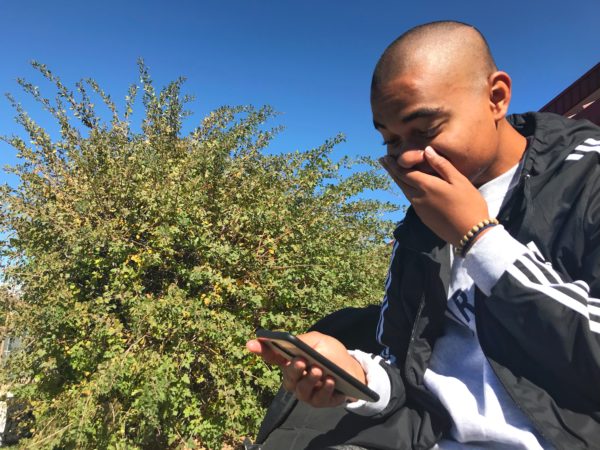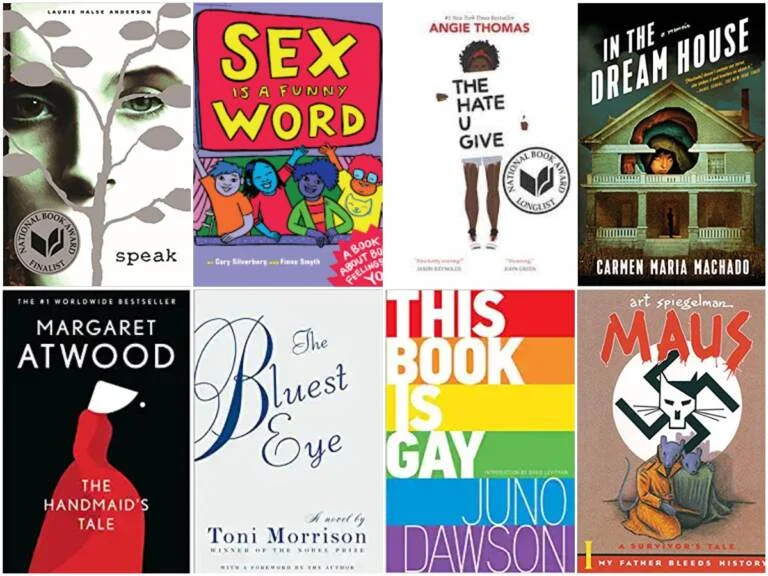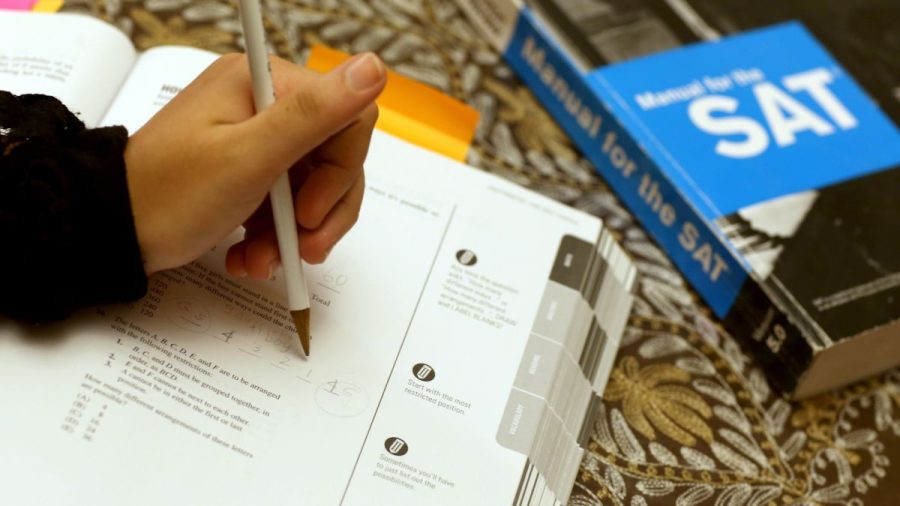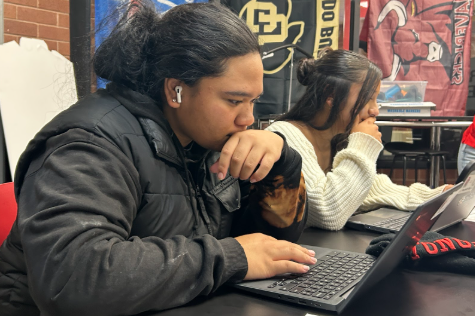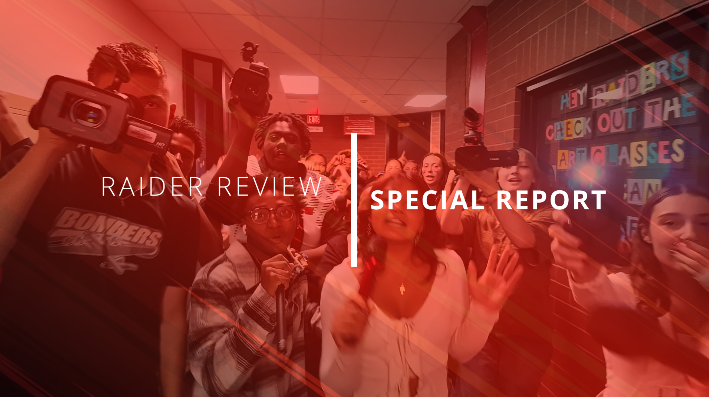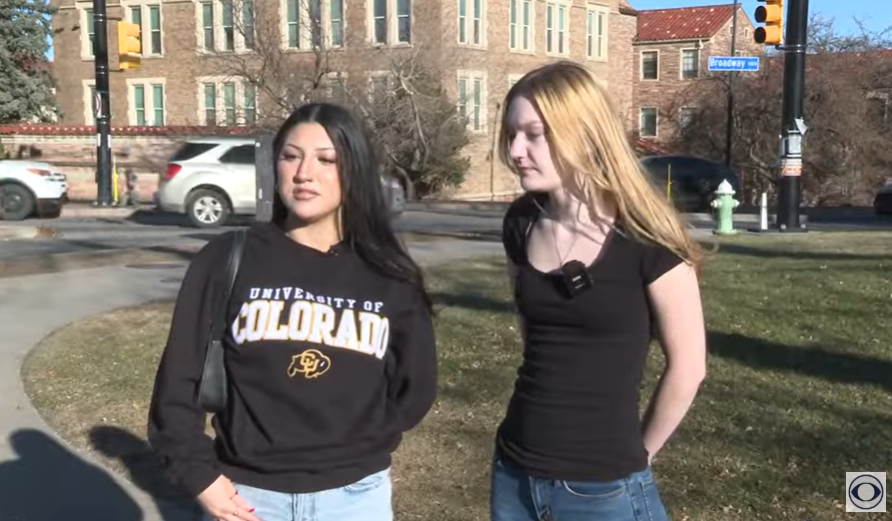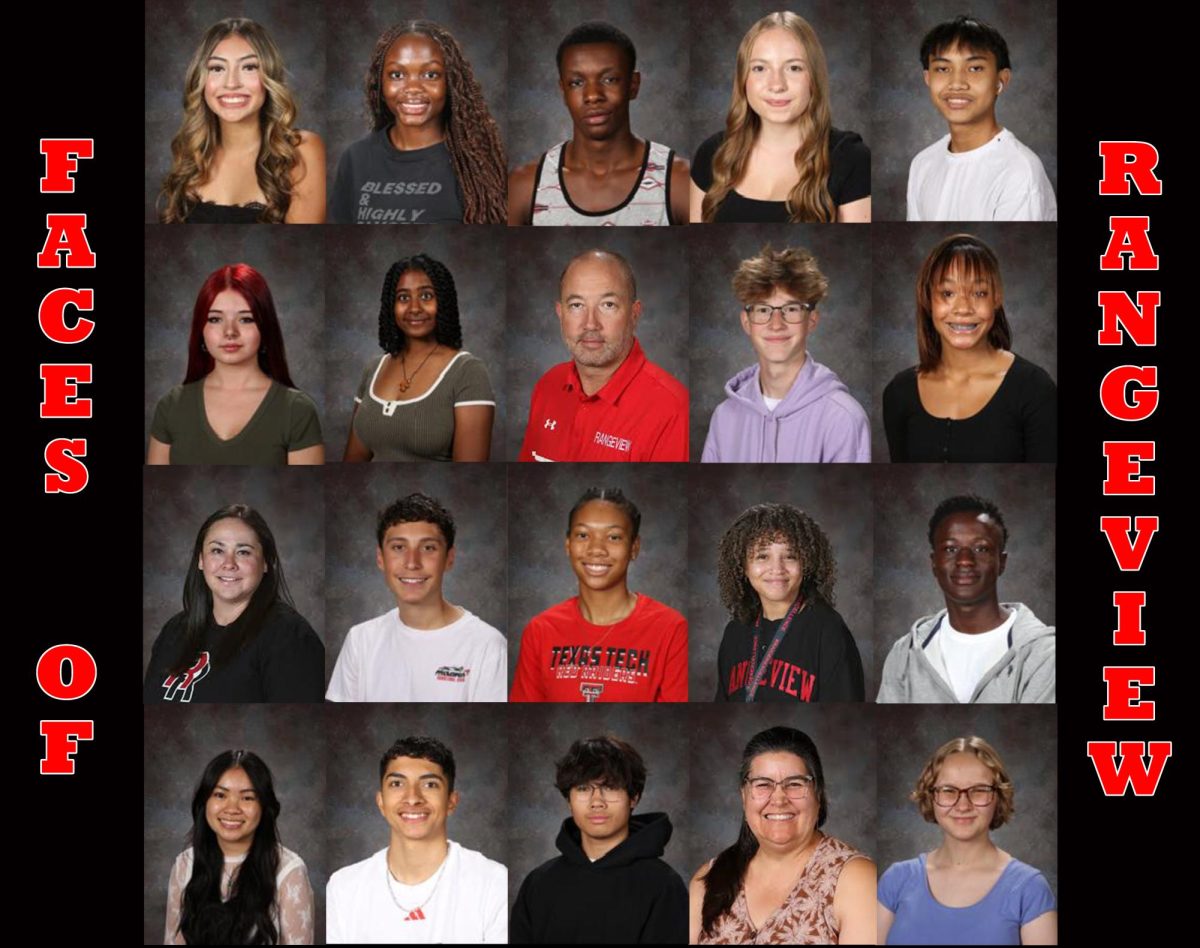Feature Photo By: Eric Huynh – Junior Jr. Cantero reacts to an article on a recent bullying article on Jamel Myles. Bullying has been popping up and being addressed more frequently on the news.
After several years of advocating to end bullying for good, the bullying rate is still increasing.
According to a 2017-2018 survey done by a non-profit group called YouthTruth, they found:

- Bullying has increased to 33%, which means nearly 40,000 students have experienced bullying out of 160,000+ students throughout 27 states.
- Schools with a majority of white students have higher rates of bullying than schools with a minority majority.
- At majority white schools, students of color experienced bullying more than white students last year.
- Middle schoolers experienced bullying more than high schoolers.
There have been multiple bullying stories that occurred this year as opposed to the years before, particularly one that happened in Denver, Colorado on August 23.
A nine year-old named Jamel Myles committed suicide four days after school started. He came out to his mom in the summer, ultimately gaining her support. Then, he proceeded to come out to his peers on the first day of school but unfortunately, his peers bullied him and told him to kill himself.
According to Psycom, the short and long term effects on the victim and bully are as follows:
| Victim | Bully |
| Short Term:
• Social isolation • Feelings of shame • Sleep disturbance • Changes in eating habits • Low self-esteem • School avoidance • Anxiety • Bedwetting • Higher risk of illness • Psychosomatic symptoms (stomach aches, headaches, muscle aches, other physical complaints with no known medical cause) • Poor school performance • Symptoms of depression |
Short Term:
• Poor school performance (missed school due to suspensions increases this risk) • Increased truancy risk • Difficulty maintaining social relationships • Increased risk of substance abuse |
| Long Term:
• Chronic depression • Increased risk of suicidal thoughts, suicide plans, and suicide attempts • Anxiety disorders • Post-traumatic stress disorder • Poor general health • Self-destructive behavior, including self-harm • Substance abuse • Difficulty establishing trusting, reciprocal friendships and relationships |
Long Term:
• Risk of spousal or child abuse • Risk of antisocial behavior • Substance abuse • Less likely to be educated or employed |

Some reasons why students are bullied are:
- Appearance
- Race
- Sexual Orientation
- Family Income
- Gender Identity
- Immigration
- Disability
- Religion
Many Rangeview students have gone through the experience of bullying:
Sophomore Caleb Urban was bullied for his appearance:
“In my middle school, people used to call me skinny and make fun of me,” said Urban. “It really hurt my feelings and I didn’t like it.”
Same with Sophomore Renee Tracy:
“It was in 5th grade and there was this really mean girl,” said Tracy. “She took all my friends away from me; she threatened me; she even had her older brother harass me which was even low for her.”
Cantero was bullied for his sexual orientation and being an immigrant:
“I was first bullied in 3rd grade when I came to the U.S. because I was an immigrant and because I was gay,” said Cantero. “I still do think of his words because the internet is full of cyber bullies who do the same thing.”
Senior John Quach was bullied for the typical asian stereotypes:
“Small making fun stuff like chink, chino, dog eater, small genitals, and the eyes things,” said Quach. “They [the bullies] made me feel like I didn’t belong.”
But — all of them believe that victims of bullying shouldn’t let bullies bring them down and instead, ignore them and ask for help.
October is National Bullying Prevention Month; it’s a campaign that was launched by Parent Advocacy Coalition for Educational Rights (PACER) in 2006. It’s a time where people — ranging from teens to politicians — along with anti-bullying

organizations, come together and focus and raise awareness on bullying.
As the month progresses, more people have been getting involved to address Bullying Prevention Month, including celebrities like:
- Liam Payne: “Help keep bullying out of our schools and offline.”
- Donna Missal: “Love is the only way to beat hate.”
- The Chainsmokers: “Stomp out bullying. Spread love. Not Hate.”
- Ally Brooke: “No one deserves to be bullied.”
Furthermore, organizations like STOMP OUT Bullying has planned out what students can do during the month in order to get involved in National Bullying Prevention Month.
This is the time for students to think of ways to get involved throughout the month and truly advocate for anti-bullying.
To look into more non-profit anti-bullying organizations partnered with PACER, visit:
https://www.pacer.org/bullying/getinvolved/partners/national.asp
And if you plan to get involved, visit the following website for some ideas on how to help:
https://www.smartsign.com/blog/7-ways-to-make-national-bullying-prevention-month-count/
